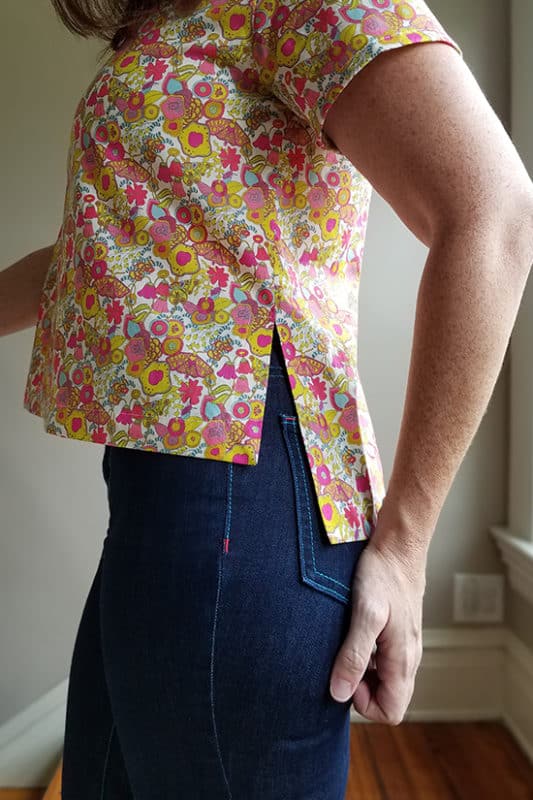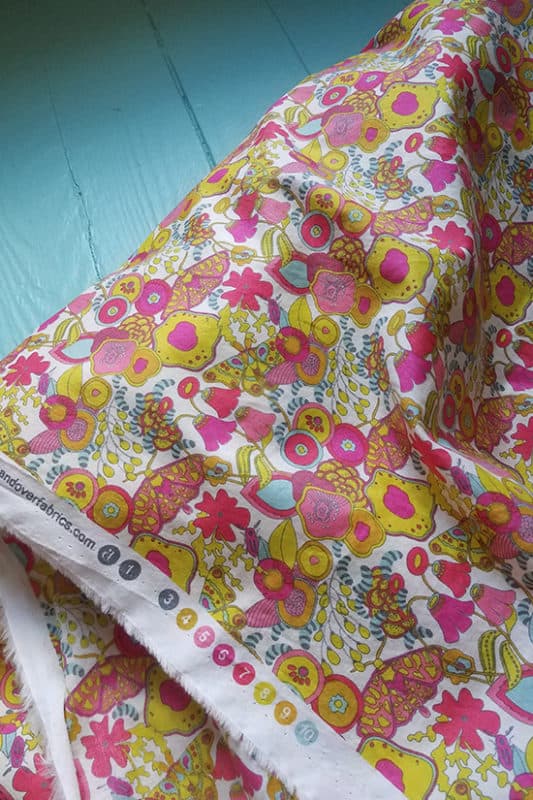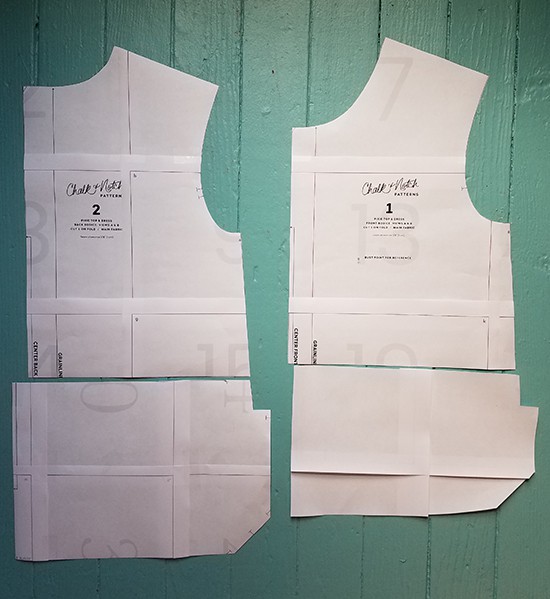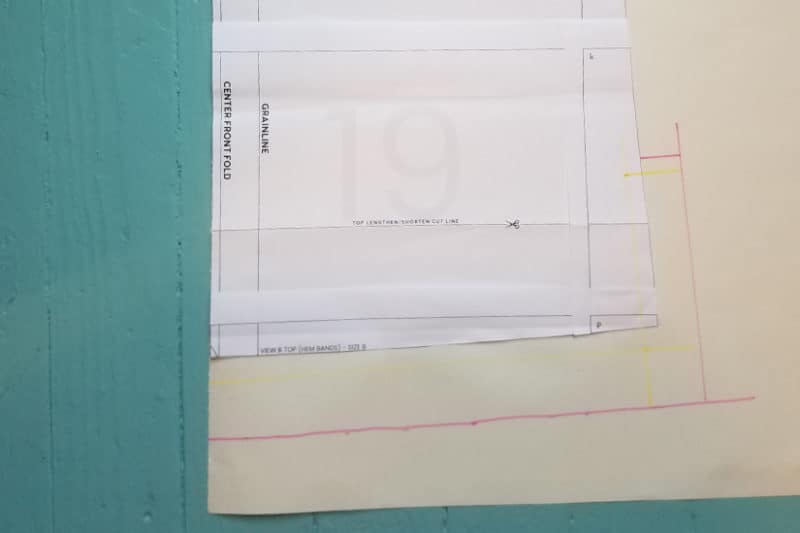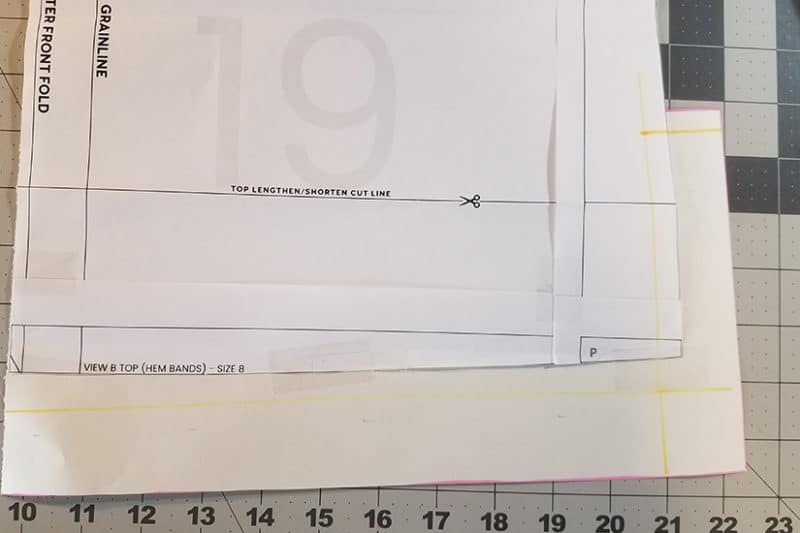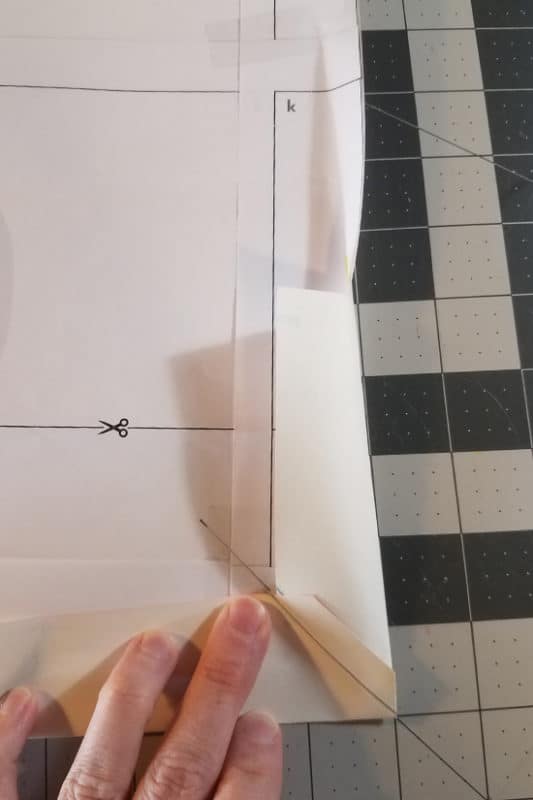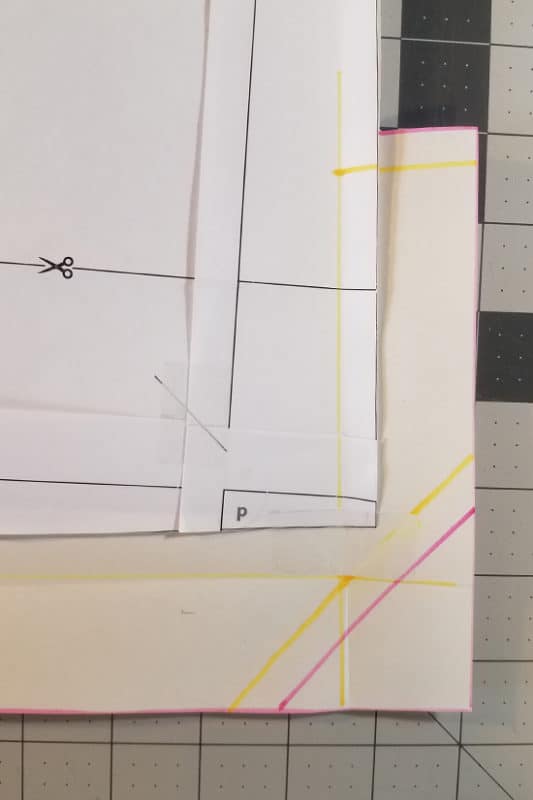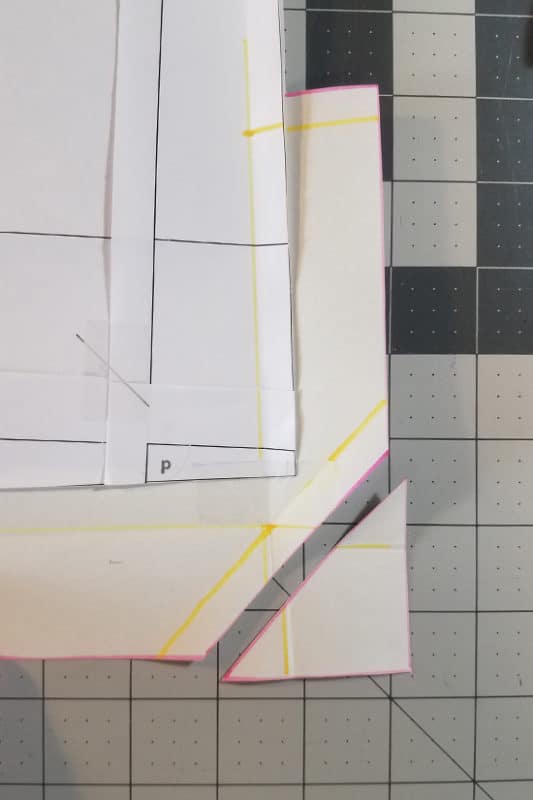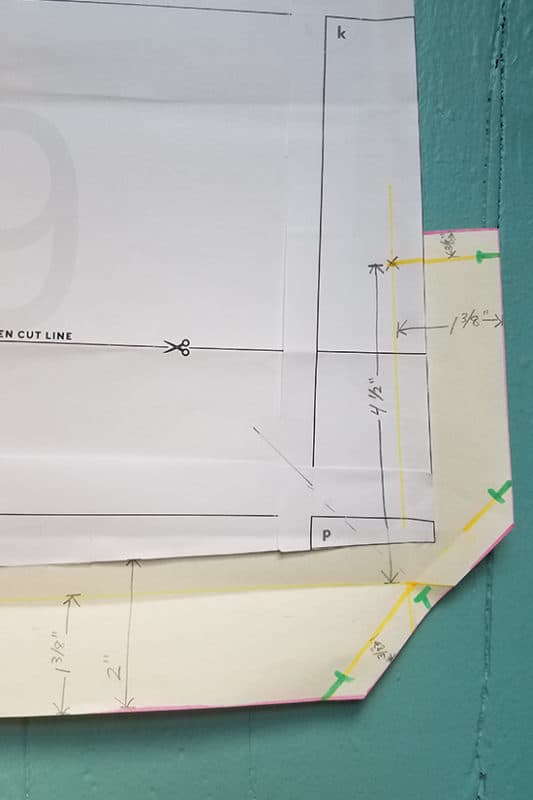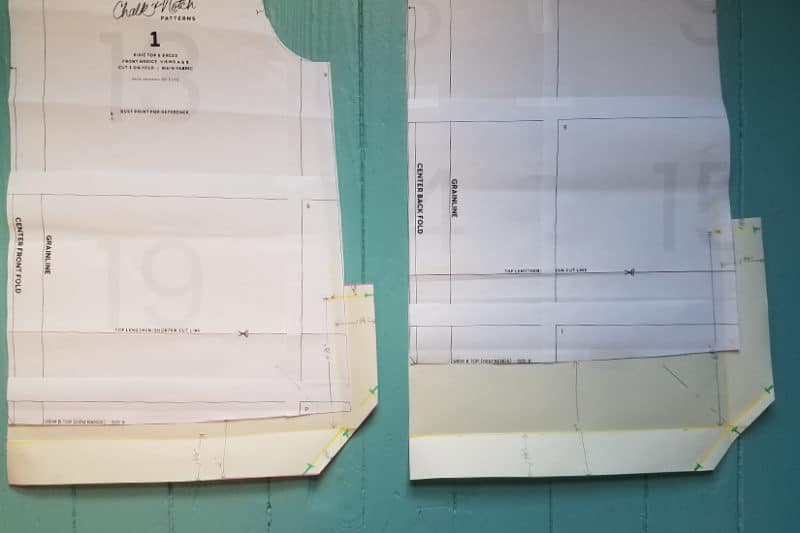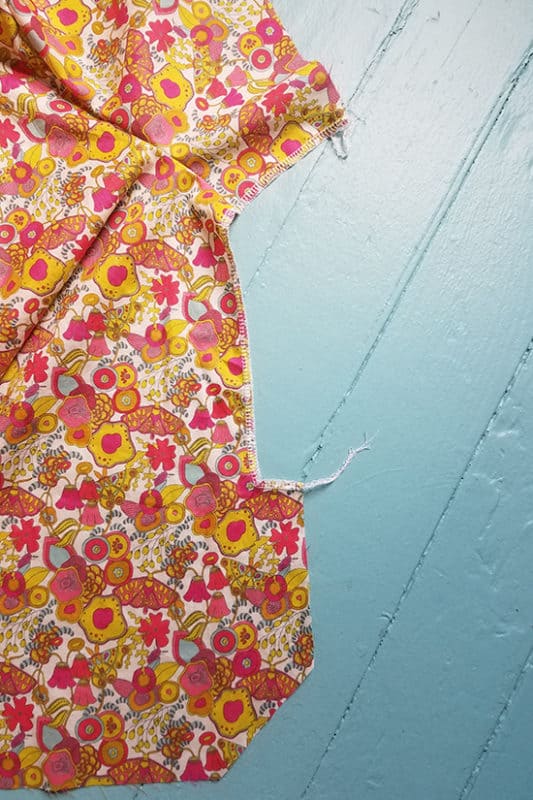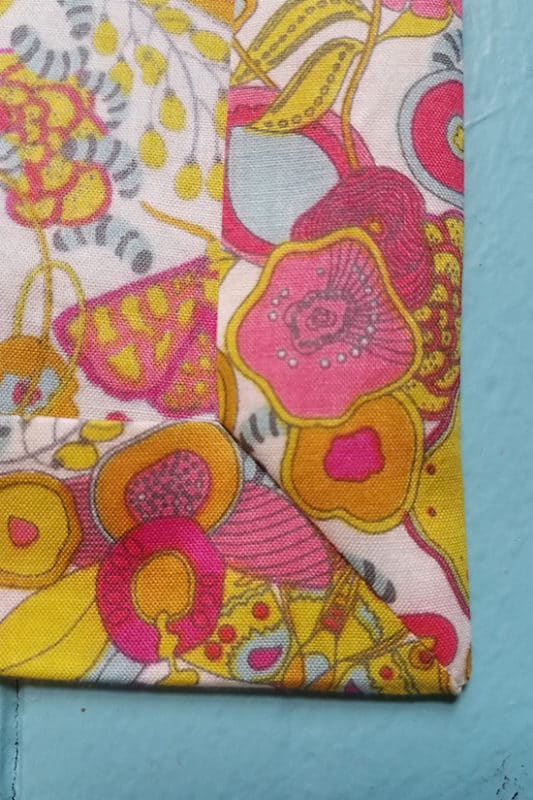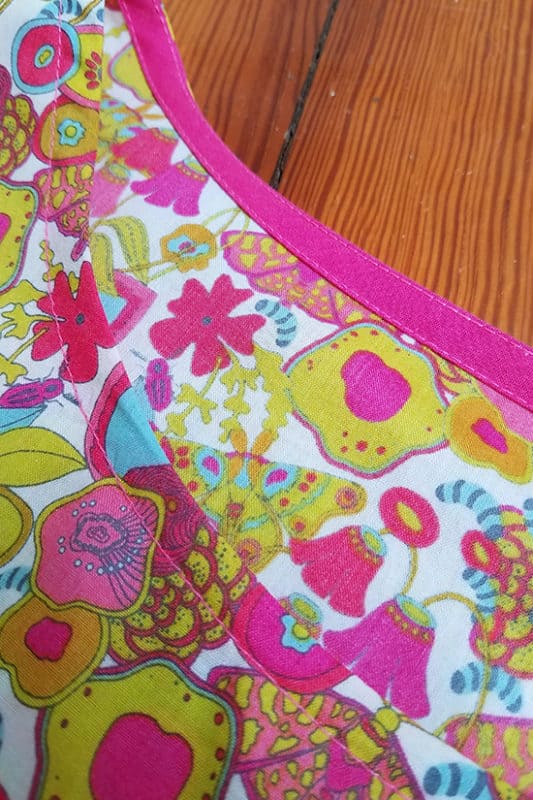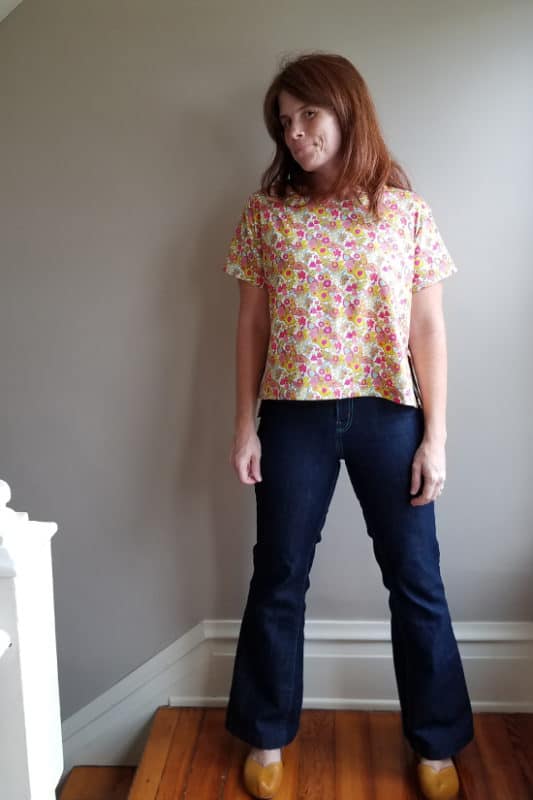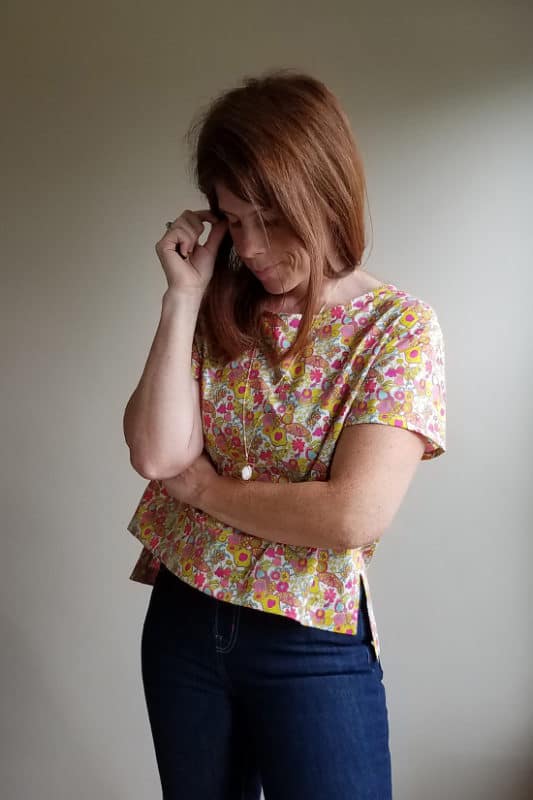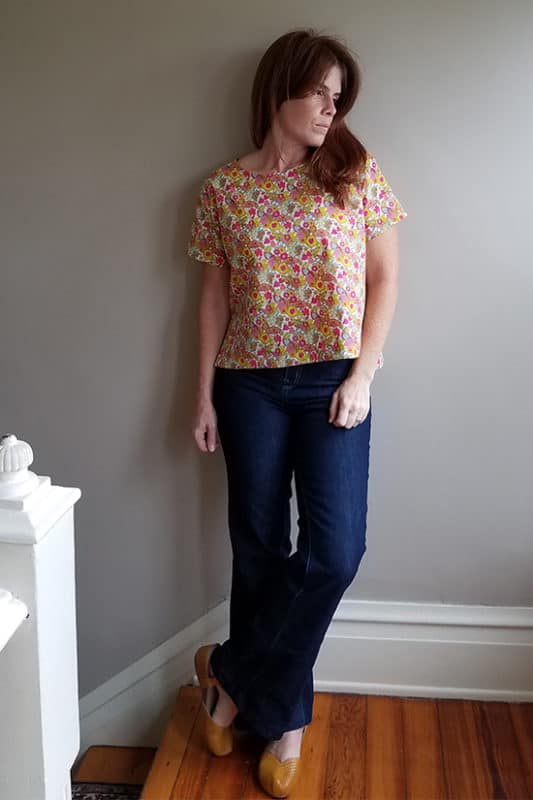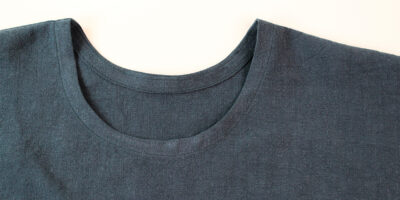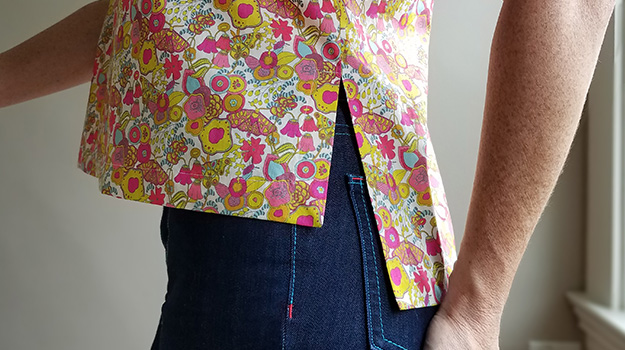
We have a special guest today, the lovely Loni of HavinSewMuchFun, sharing her Woven Pixie with a side split hem! I love this hack so much that I have already made two and I have plans for more…maybe even a dress. This hack will require a bit more pattern work, but Loni walks you through every step. I’ll let her give you all the details – we hope you enjoy!
Loni of HavinSewMuchFun
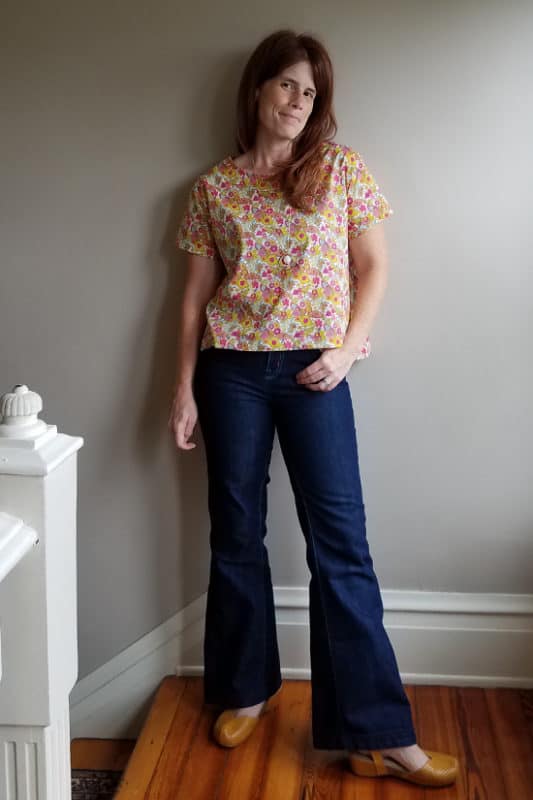
Fabric c/o Raspberry Creek Fabrics
Back in June when the Pixie Tee pattern was in testing, I decided to step out of my comfort zone a bit and test Pixie in dress length. Well, it was cozy AF. (Can I say that here?) In part, the comfort factor comes from the generous amount of positive ease in Gabriela’s design. With 5 inches of ease, I got to wondering, could I make Pixie in woven fabrics without needing to size up or make other modifications?
Obviously, I’m here to tell you that I did it and you can too! I’ll even step you through a hem variation inspired by another Chalk and Notch favorite, Farrah.
Fabric
Before we get into the details, I need to thank Raspberry Creek Fabrics for graciously providing this cotton lawn, Miniature Garden in ivory, from Alison Glass’ Adorn line. Lawn is a sturdy yet airy woven that’s very easy to work with.
Pattern Adjustments
The quick and dirty mash-up goes like this – cut the front and back Pixie bodices 2 inches above the lengthen shorten line and cut the Farrah pieces right at the lengthen shorten line. Marry them together, accounting for any difference in width. I used Pixie’s sleeves without any modification and I made no changes to the neckline.
Now if you don’t have Farrah, and you’re feeling adventuresome, I’ll hold your hand through drafting your own vented high low hems with mitered corners. (Truth is Gabriela held my hand, lots!) Here’s how the drafting breaks down.
Front – using the banded view of Pixie, add 2 inches to the length and add 1” to the width at the side; both of these lines are shown in pink. At the bottom hem, draw another line parallel, up 1 3/8” (hem allowance, yellow line). Repeat at the side (should run 3/8” in from the original side and correspond to the side seam stitch line). Along the side seam’s stitching line you just drew, measure up from the bottom hem’s yellow line 4.5”. Add 3/8” seam allowance above, and you’ve defined your vent.
At this point, cut away the excess tracing/drafting paper (yeah mine is kid craft paper because I’m team #nevertrace) and we’ll work on the miter. Folding the pattern piece along the yellow lines, find the point where they meet.
This point should be on a line which extends to the corner at 45 degrees. Unfold the hem lines and fold the pattern along the new line. This is the stitching line for your miter.
Draw a line, adding the 3/8”seam allowance (pink) here and then cut away the excess. Mark notches as shown in green for the mitered corner and side seam.
Congrats; you have just performed witchcraft! Ok. It’s not exactly sorcery, but drafting feels rather magical. Repeat the same drafting steps for the back bodice, only making it 2” longer; add 4” in length to the banded view and measure up 6.5” up along the side seam stitching line (plus 3/8” seam allowance) to define the vent height.
Construction
Sew and finish the shoulder seams. Set the sleeves and finish the armscye. Finish the side seams (4) separately from sleeve hem down to and across the top of the side seam vents.
Press memory hems on the sleeves (1/2” twice), bottom hems (3/8” and another 1”), and side vent hems (3/8” and another 1”). Close the side seams from sleeve hem to 3/8” past the top of the side vent (previously marked with a notch) and press open. With the first turn of the hem folded to the wrong side, fold in half along the miter, right sides together, and sew from the folded edge (notched) to the turned hem (also notched). Turn the miter out (it’s glorious how the second turn for the hem falls into place, isn’t it!?) and edge stitch the entire hem up and around each side vent. Hem the sleeves.
The only other major departure from the original Pixie pattern is in finishing the neckline. The neckline on my sample is bound with bias. I prefer the French bias binding technique for its simplicity: bias is cut in 1.25” wide strips, folded once wrong sides together, and sewn on the right side of the neckline with raw edges aligned; the seam allowance is clipped, understitched, turned completely to the inside, then edge stitched in place.
So that’s it! I hope you’re inspired to sew Pixie in wovens now too. This style pairs nicely with high-waisted bottoms. Think Lander pants, Persephone, and Birkin Flares (shown).
I like to get a chuckle thinking that our inspiration model below is wearing her $100 couture top backward. I mean my kids do this all the time when no one sews a label in their clothes. But Raspberry Creek has you covered with a Tencel twill in nearly the same shade of blush as well a several other great woven fabrics for your Pixie tee hacking adventures. I know I’m craving a linen version next.
 Inspiration | 1 Fabric | 1 | 2 | 3 | 4
Inspiration | 1 Fabric | 1 | 2 | 3 | 4
Parting notes and additional resources-
I’m 5’5” and my body measurements put me squarely in size 8 for Chalk and Notch patterns.
As with any new pattern, you may like to make a quick muslin to assess fit.
Colette and Tilly and the Buttons both have good posts on mitered corners if you’d like to see more.
Made by Rae has a tutorial series on bias binding for more details and alternative approaches.
Thank you so much for stopping by!
Loni
This is a sponsored post using fabric I received free of charge from Raspberry Creek Fabrics.

